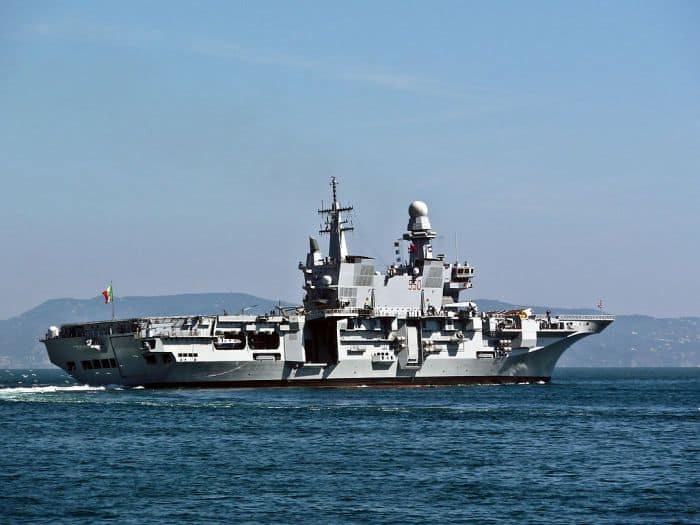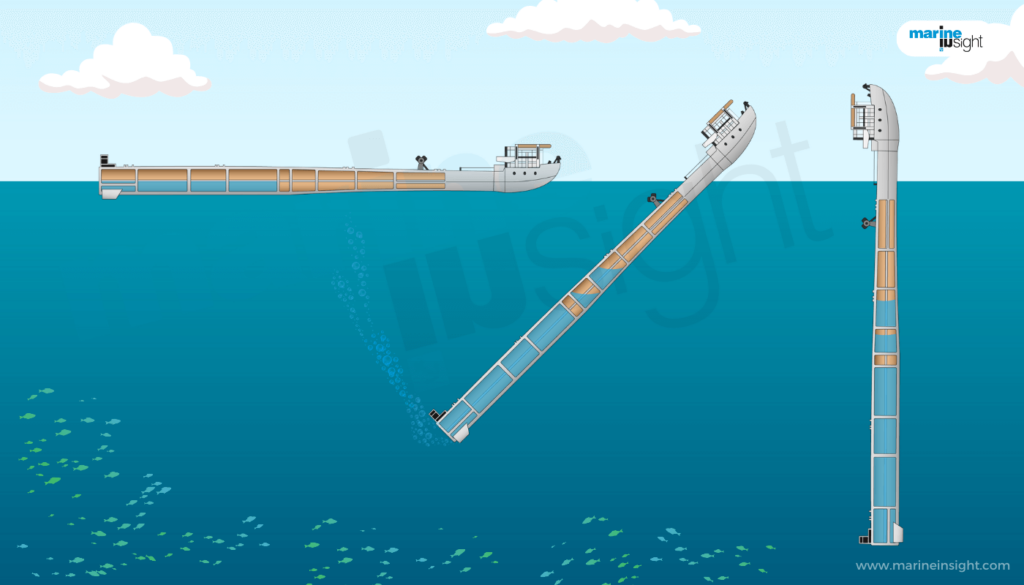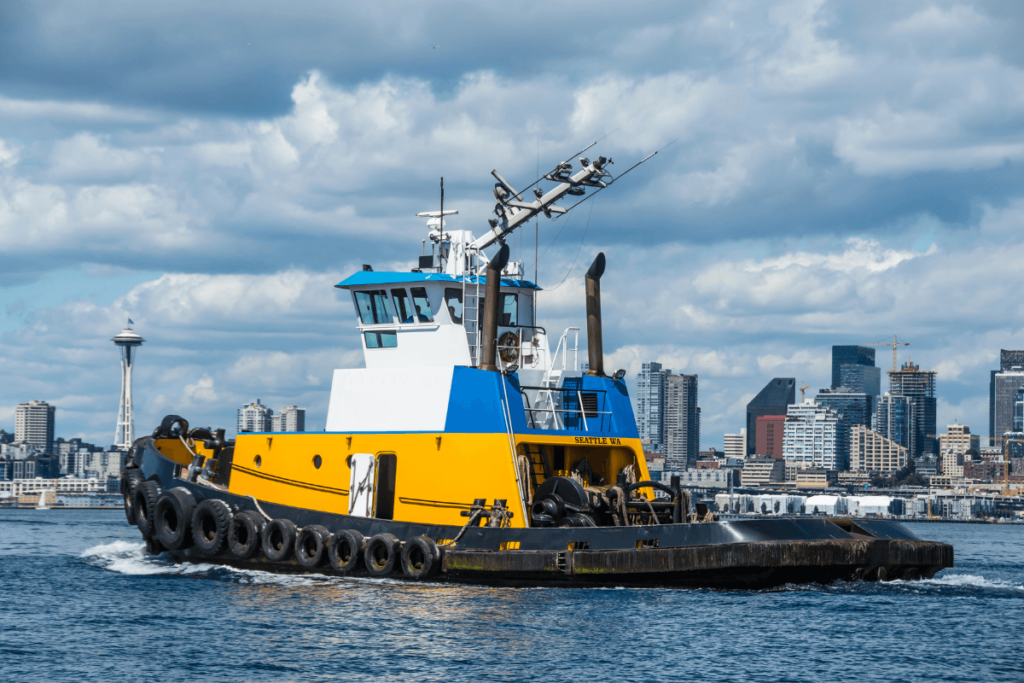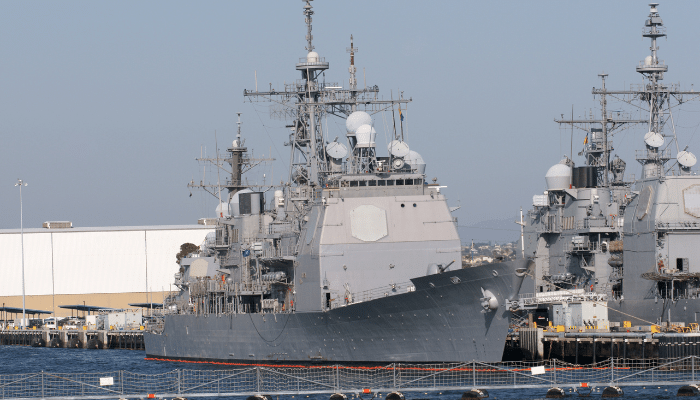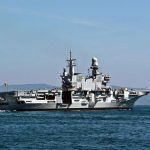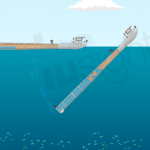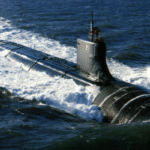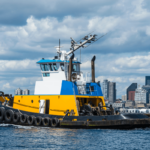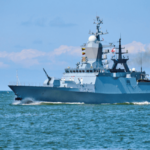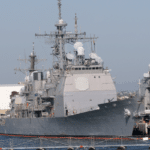What Are Nuclear Vessels?
For the last few decades, the context of the energy crisis has been making headlines all around the world. With the expanding demand of the ever-increasing population across burgeoning economies all around the globe, it is absolutely real that the non-renewable sources of energy are gradually depleting at a very alarming rate.
By non-renewable sources of energy, we simply mean the sources of energy that are derived from natural reserves of fossils and other organic components, such as petroleum products like diesel, petrol, or various types of natural gases, which make up the lion’s share of the gross consumption around the globe.
So for the last several years, numerous sectors worldwide have scoured alternatives to conventional energy modes or the so-called non-renewable resources. They include wind energy, tidal energy, solar energy, hydraulic energy, and nuclear power.
These have been placed under the bracket of so-called renewable resources. While wind, tidal, solar, and hydel power can be derived infinitely and boundlessly from natural sources of nature, nuclear power cannot be called a 100% natural means of renewable energy.
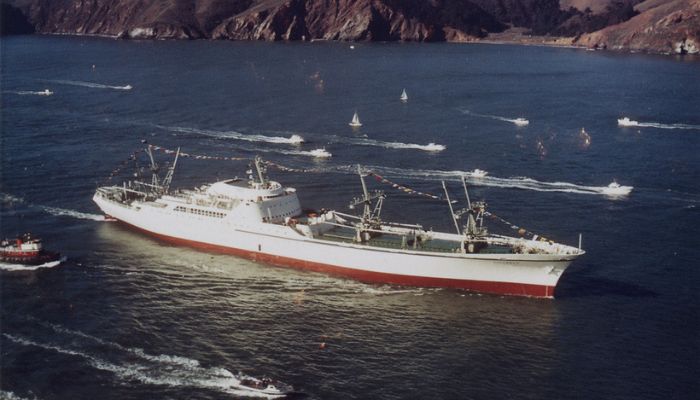
Nuclear power is derived from chemical reactions that involve limited nuclear substances that are reacted under special conditions. While nuclear energy is coined as a ‘clean source of energy, it cannot be considered at par with the other natural renewable means due to the following reasons:
They are expensive and continual procurement comes at a hefty cost for any kind of process; they require even more expensive paraphernalia and conditions for exploitation; and last but not least, they cannot be considered entirely safe, whether in terms of an environmental context or the process which involves their production itself.
Though speaking of the environment, it can still be considered much cleaner than the conventional carbon-based renewable energy sources mentioned above. However, though they cannot be called ‘inexhaustible’ or entirely renewable, they are still very much ‘abundant’. They have no signs of shortage, a pressing issue for conventional means. So, nuclear power can be considered something between renewable and non-renewable.
Ships are also not an exception from the economic sectors switching over to renewable energy sources. The pollution from global shipping traffic has been a topic of big discussion over the past several years. Water transport accounts for almost 3% of global carbon emissions and is expected to escalate at an alarming rate by 2050 if no action is implemented.
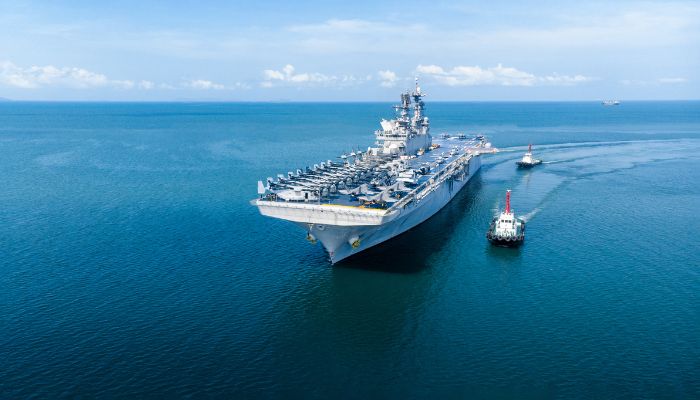
Furthermore, it also contributes to an alarming 20-30% of nitrous and about 10% of sulphur-based pollution worldwide. International Maritime Organization (IMO) has been working around the clock to collaborate with shipping industry stakeholders, statutory bodies, environmental agencies, and governmental bodies to curb emissions from ships globally. Its latest widely-discussed ambitious goal is to curb ships’ emissions by at least 40% by the forthcoming 2030 and a whopping 70% by 2050.
So, several commercial ships have been converting to nuclear-based propulsion over the past few years as a major step in containing emissions and adhering to international guidelines without compromising on the profits and supply chain. Military and other special purpose vessels are also entering into the foray.
While many new building vessels have been designed as nuclear vessels, several old and existing vessels are also converting from conventional propulsion to nuclear means. Some ships also have implemented a dual option of nuclear and traditional means of propulsion and are coined as ‘Hybrid’ vessels.
Nuclear Propulsion
Recapitulating, a nuclear ship is a vessel that runs on nuclear means of power, either fully or partially. A nuclear vessel propulsion plant essentially utilises the heat energy generated from specialised nuclear reactors and, in turn, converts it into mechanical and electrical energy required to rotate its propulsive components either directly or indirectly through intermediate electrical motors and generators.
The framework of nuclear propulsion is almost the same as that of conventional means of propulsions, with the chief difference being the source of the heat energy generated. In traditional means, the calorific value of the energy present in the renewable means of fuel sources such as diesel or coal (mostly in earlier days) is tapped to produce heat energy. On the other hand, nuclear vessels exploit the energy from a nuclear reaction.
Now, the question arises: how does a nuclear reaction take place? The answer is that the same principle for nuclear reaction used elsewhere, like in nuclear power plants or stations, is utilised in the case of vessels as well.
Though we do not go deep into the chemistry of nuclear power generation and reactions, it can be noted that the primary process of nuclear reaction is fission. This is technically opposite to fusion which is used to define the combination of two or more substances into one.
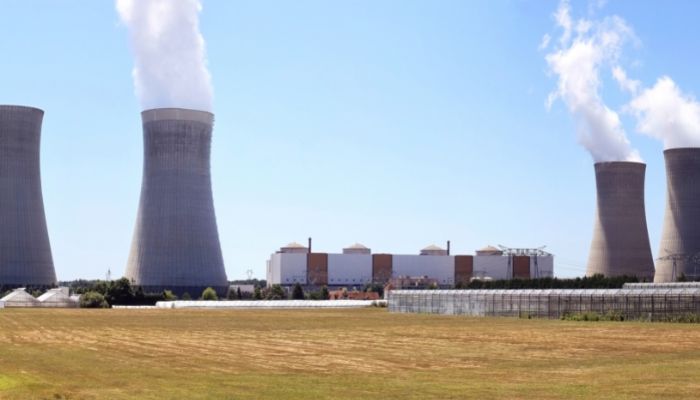
Fission, on the other hand, is the disintegration of atoms to form discrete elements, and the process involved in this produces an immense amount of heat energy from a nuclear point of view. This released energy index, if adequately exploited, can be hugely beneficial in generating a huge amount of power.
Now, the nuclear reaction needs to be carried out in a proper environment. The nuclear reactor is the main component of any nuclear power plant, whether land-based or on ships. A nuclear power plant essentially contains and controls the entire nuclear reaction under controlled temperature, pressure and other conditions befitting to carry out such processes. Furthermore, they are also responsible for storing the energy required to be transmitted to generate electrical energy. Nuclear reactors, also known as the ‘heart of any nuclear power plant’, can be costly and are available commercially. So, ships employ specialised reactors.
Now, the nuclear reaction entirely involves fuel, mainly a special breed of the chemical radioactive or nuclear substance known as Uranium- U 235. Though other nuclear substances, such as Plutonium, are also sometimes used, U-235 remains the most preferred and used one. In a typical design for a nuclear reactor, this uranium is stored in an array of sealed metal tubes known as fuel rods or the reactor assembly.
Depending on the size and production capacity of the reactor, the number of such rods can range from around 100 to a few hundred. These usually make up what is known as the core of the reactor. The main nuclear reaction initially occurs within this core assembly at an uncontrolled and rapid rate. Thus, they must be controlled properly to prevent explosions due to overheating or unbridled reactivity of the fission.
These fuel rods are immersed in water which is the coolant for the fuel assembly. As fission occurs with these fuel rods, the water controls the heat index produced by the chain reactions. At this juncture, it is essential to know that all nuclear reactions, by nature, are essentially chain reactions which continue infinitely if not controlled under proper conditions.
The heat absorbed by the water at very high temperatures converts it into steam, akin to traditional means, which is then tapped to produce mechanical energy for driving in-built turbines, which in turn is mostly converted into electrical energy required for propulsion and other means of consumption. In some cases, the mechanical energy can be directly tapped into the propeller assembly for direct-drive power generation.
Mechanical to electrical power is often converted through turbo-electric systems or hybrid turbines. Ships employing such systems are known as dual or hybrid nuclear-electric propulsion vessels.
In a nutshell, the components of any nuclear power plant are mostly:
- Reactor
- Steam Generator
- Coolant Pressurisation system
- Purification System cooler
- Turbine
- Condenser
- Feed Water Supply system
- Coolant lines and piping
- Containment systems
In brief, there are mainly two kinds of nuclear reactors mostly used:
- Pressurized Water Reactors
- Boiling Water Reactors
In pressurised water reactors, the feed water is pumped continuously at a steady rate and high pressure to the core or assembly. This essentially prevents the water from boiling off. After being exposed to the nuclear fission process, this heated water is pumped and channelised into an array of water tubes stacked into what is known as the heat exchanger.
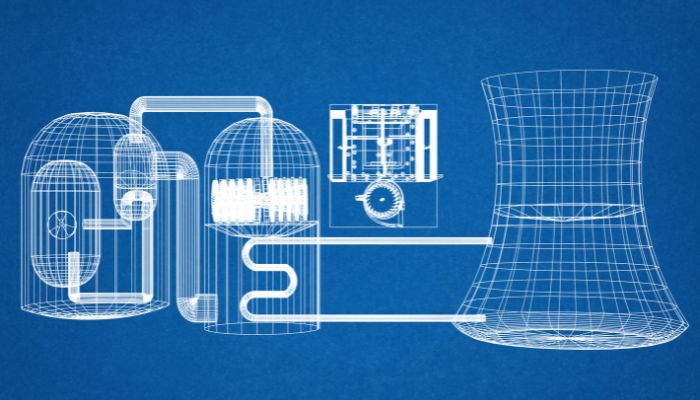
Now, water from another fresh supply source is put inside this exchanger, which gets heated from the heated water tubes. This heated water then boils to steam that generates mechanical energy to drive turbines and other electrical systems. After losing heat, the entrapped heated water inside the tubes is recirculated back to the reactor for reheating, and the cycle is continuously repeated as required.
On the other hand, in boiling water reactors, the process is relatively simpler. Here water from only one source is drawn continuously and directly to the reactor without any exclusive heat exchanger and boiled off at very high temperatures, thanks to the fission reaction. The steam generated is straightaway directed to a turbine to generate electricity. The remaining steam is then condensed to liquid form and reused for heating.
Nuclear Reactor in a Ship
The nuclear reactor used in ships is quite different from land-based ones. While large terrestrial nuclear power plants are required to produce up to thousands of megawatts of electrical power to cater to monumental power requirements over vast areas, ships require relatively limited power.
Furthermore, the volume within the hull is limited in a vessel, and the reactor needs to be confined within restricted spaces. So, the nuclear power plant within a vessel is much smaller for all practical purposes. Often vessels used scaled-down reactor types known as Small Modular Reactors (SMRs). These reactors are mainly pressurised and designed to be more compact.
Furthermore, since the size of a reactor is small, for better efficiency of the reactions, the nuclear fuel used is of a much more high-grade type. Usually, higher concentration breeds of Uranium 235 or Uranium 238 are used. Though some vessels recharge the feed water from seawater, some vessels use a limited amount of water that is continuously condensed and recirculated back.
As the reactor is small and needs to cater to a continuous service throughout the life of a vessel, the stresses generated mechanically and from critical levels of the heating index over a small area are quite high. So, the design of such reactors is done meticulously with high-grade materials to not only withstand high levels of stress but also sustain the nuclear reaction effects throughout the service life of the vessels under confined conditions.
An ideal nuclear reactor design in a vessel must be durable, reliable, compact, and, most importantly, safe. However, due to lesser space constraints, the thermal efficiency of a reactor in a vessel is always less compared to land-based ones, however competent the design may be.
Advantages and Disadvantages Of A Nuclear-Powered Vessel
As they say, there are always two sides to a coin. So, the advantages and disadvantages of a nuclear-powered ship may be as follows:
- Advantages
- They require almost no refuelling and are thus very cost-effective. Usually, the fuel stored in the reactor is sufficient to cater for up to 20-30 years of a vessel’s service life. Also, the amount of fuel to be carried is far lesser. From an economic standpoint, this is much more advantageous.
- Due to the high efficiency of the reactions, the performance and propulsive efficiency are higher than conventional means. So, these vessels have larger speeds and far lower emissions levels.
- Nuclear reactions require no influx of free air for combustion. They are advantageous in freezing climates, especially for submarines that frequently do not need to go above water levels to air. In ice-class vessels and submarines, nuclear propulsion also has the upper hand for powering through ice covers.
- Low emission levels, as discussed above.
- Disadvantages
- Hazards and risks associated with nuclear phenomena.
- High costs of installation and maintenance.
- Corrosion, high degrees of stress, vibration and other problems associated with the reactors.
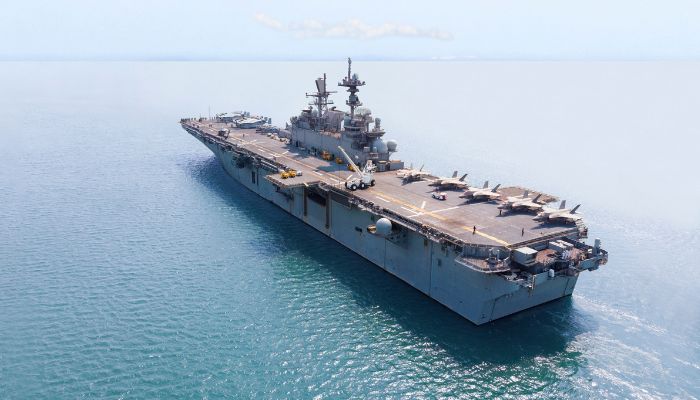
However, with time, more vessels had been going nuclear since its advent more than half a century ago. A majority of modern defence submarines are nuclear-powered. After US and Russia, countries like India, the UK, and China are also increasingly opting for nuclear-powered ships and submarines. It can be argued that the number of nuclear vessels shall increase manifold in the times to come.
You might also like to read-
- Understanding Nuclear Marine Propulsion
- World’s First Zero Emission Vessel- E/S Orcelle
- NS Savannah – The World’s First Nuclear Merchant Ship
- MV Beluga Gravitation: A Powerful Multipurpose Vessel
- What is an Automated Mutual Assistance Vessel Rescue System (AMVER)?
Disclaimer: The author’s views expressed in this article do not necessarily reflect the views of Marine Insight. Data and charts, if used, in the article have been sourced from available information and have not been authenticated by any statutory authority. The author and Marine Insight do not claim it to be accurate nor accept any responsibility for the same. The views constitute only the opinions and do not constitute any guidelines or recommendations on any course of action to be followed by the reader.
The article or images cannot be reproduced, copied, shared, or used in any form without the permission of the author and Marine Insight.
Do you have info to share with us ? Suggest a correction
Latest Type Of Ships Articles You Would Like:

About Author
Subhodeep is a Naval Architecture and Ocean Engineering graduate. Interested in the intricacies of marine structures and goal-based design aspects, he is dedicated to sharing and propagation of common technical knowledge within this sector, which, at this very moment, requires a turnabout to flourish back to its old glory.
Subscribe To Our Newsletters
By subscribing, you agree to our Privacy Policy and may receive occasional deal communications; you can unsubscribe anytime.



